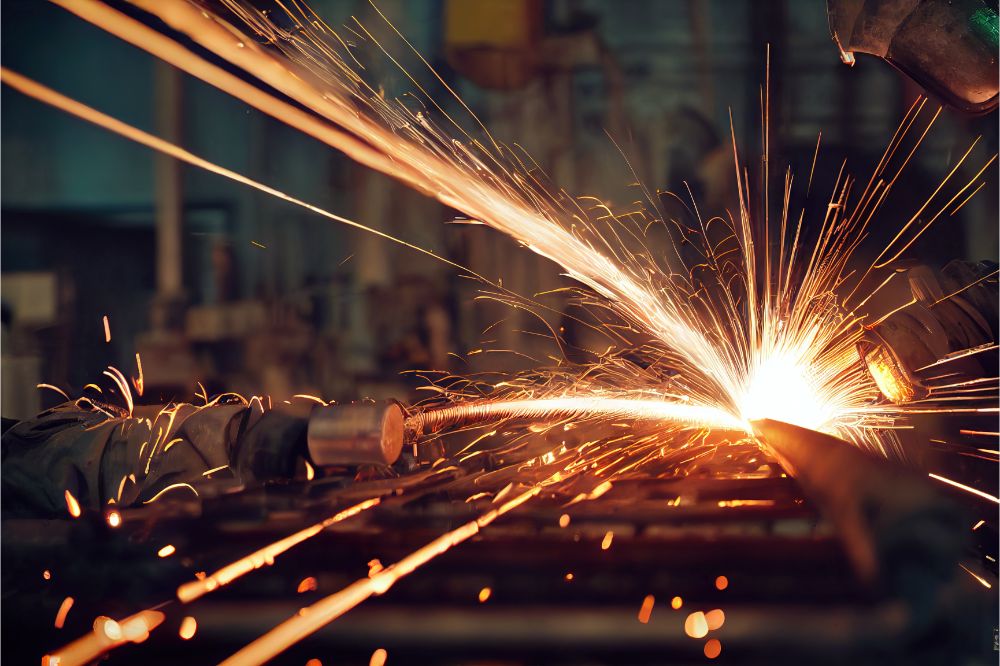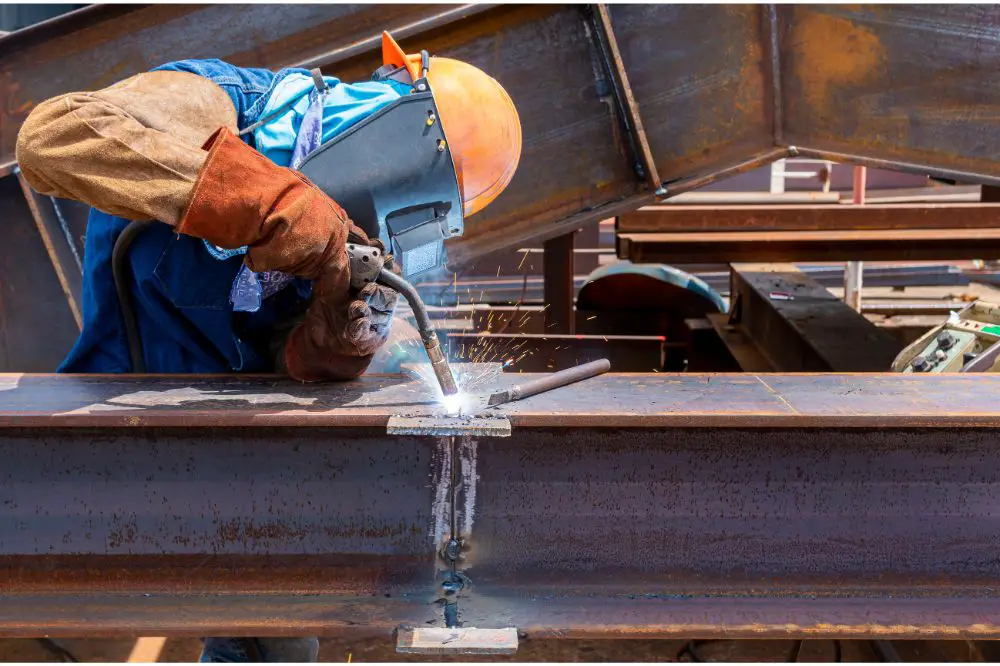This question gets asked all the time. Whether you are at the hardware store, discovering there are two types of steel, or you’re a new welder in the making, we’ve got you covered. Hot rolling and cold rolling are pretty simple once you understand the basics.
Here are a few differences that we’ve found between hot-rolled steel and cold-rolled steel:
- Hot-rolled steel is the cheaper option. If you’re getting something fixed, this is your best option. It’s better for general construction projects such as gates, railings, railroad tracks, and trailers.
- Cold-rolled steel is used for more specific requests, like car or machinery parts, where precise shapes and weights matter to the result of the project.
- Both have a similar process; the difference will be found in the finished product’s sounds, feel, and look.
To explain the differences between cold-rolled and hot-rolled steel, we will discuss the differences in processing and how to identify each type. After that, you can decide which option is better suited to what you have in mind.
How Are Hot-Rolled and Cold-Rolled Steel Made
Both hot-rolled and cold-rolled steel is manufactured through a process that takes raw materials and turns them into usable steel. These pieces of metal are produced in steel mills.
In hot-rolling, a large rectangular piece of raw material, called a billet, gets put into a room with extreme temperatures for pre-processing. This temperature can be around or above 1,700˚F, which is above most steel re-crystallization temperatures. At such a high temperature, the steel is more malleable and it can then be compressed between a series of rollers until it forms more than a crude metal sheet. The metal is sectioned into the desired shape in metal bars or plates and then left to cool. For metal sheets, the metal is rolled into coils before being left to cool down.
With cold-rolling, the metal goes through the same process as hot-rolled steel. However, before the metal is shaped, it’s put through additional processing, which increases the surface quality of the steel. In this case, with metal sheets, the steel is further compressed between rollers before being set out to cool. When it involves bars or other steel finishes, this process is called cold drawing, not cold rolling. And it will involve cutting, grinding, polishing, or drawing instead of rolling steel between the rolling mills.
When you consider how similar the processes are, you probably wonder if there are any differences in the finished project. After all, if you’re paying the heftier price tag, you will want to know that you’re getting the steel you were promised and not a copy of it. However, if you’re looking for a type of steel to weld with, then you won’t be too worried beyond getting the job done.
Know The Difference
In our research, it has become abundantly clear that cold-rolled steel is essentially hot-rolled steel, except with a few more finishing touches. The price increase mainly comes from the additional processing and a few extra benefits. This additional processing comes with a list of benefits that make that price tag worth it. For instance:
- Cold-rolled steel is almost 20% stronger and more durable than hot-rolled steel.
- It is more balanced. Although you need specific tools to tell the difference, cold-rolling gives steel an exact weight.
- Cold-finishing metal sheets and bars alike will have an almost perfect appearance.
- It has dimensional tolerances. While cold-rolled steel has a lot of internal stresses, it can be cut into precise shapes much easier than hot-rolled steel.
- There is improved resistance against deformation and tension.
The strength and balance of cold-rolled steel make it perfect for precise applications. Cold-rolled steel is better suited for car or airplane parts, machinery, and hospital equipment.
Once you know more about the theory of cold-rolled or hot-rolled steel, spotting the differences becomes much easier. We’ve included a short description of both steel types to help you.

How Do They Look?
Cold-rolled metal is often made with stainless steel. All that processing gives the product a better quality appearance which you will be able to see in a few examples, such as:
- Sharp Edges. Cold-rolled steel will have sharper edges and a more refined shape.
- Mirror Finish. It will have a flatter and shinier, almost greasy finish. This appearance is due to extra compressing, which creates a special surface finish.
- Near exact dimensions. While it’s pretty hard to get exact dimensions, cold-pressed steel is malleable enough to give a close enough result.
Hot-rolled steel is usually made with basic carbon steels, or A36 steel, and will look crude against cold-pressed steel. Here are a few things that are characteristics of hot-rolled steel:
- Rounded corners. This type of metal won’t ever have well-defined edges as it hasn’t been compressed enough to be as ductile as cold-rolled steel.
- Rougher surface and unpredictable warping. Unfortunately, with hot-rolled steel, you can expect to find deformities in the appearance of the steel, such as bumps, warping, and sometimes even cracks or a scaly finish.
- Lack of balancing. Hot rolling doesn’t give the steel enough time to even out all the kinks, which means that the hot-rolled steel will not have the same weight throughout.
While the list of characteristics for hot-rolled steel may seem bad compared to cold-rolled steel, it’s best to remember that hot-rolled is a cruder form. Hot-rolled steel also comes with the added benefit of a much lower price tag and a wider range of steels to choose from, depending on what you plan to do with it.
To Summarize
We recommend hot-rolled steel for welding as welding often doesn’t need precise dimensions, nor does it end in a refined product. Cold-formed steel is an expensive option for general construction, and unless this type of steel is specifically what you are looking for, we suggest you stick to the more cost-effective option.
Most people don’t notice the intricacies of which steel type is used in welding, so you can easily get away with using hot-rolled steel instead of cold-rolled steel.

